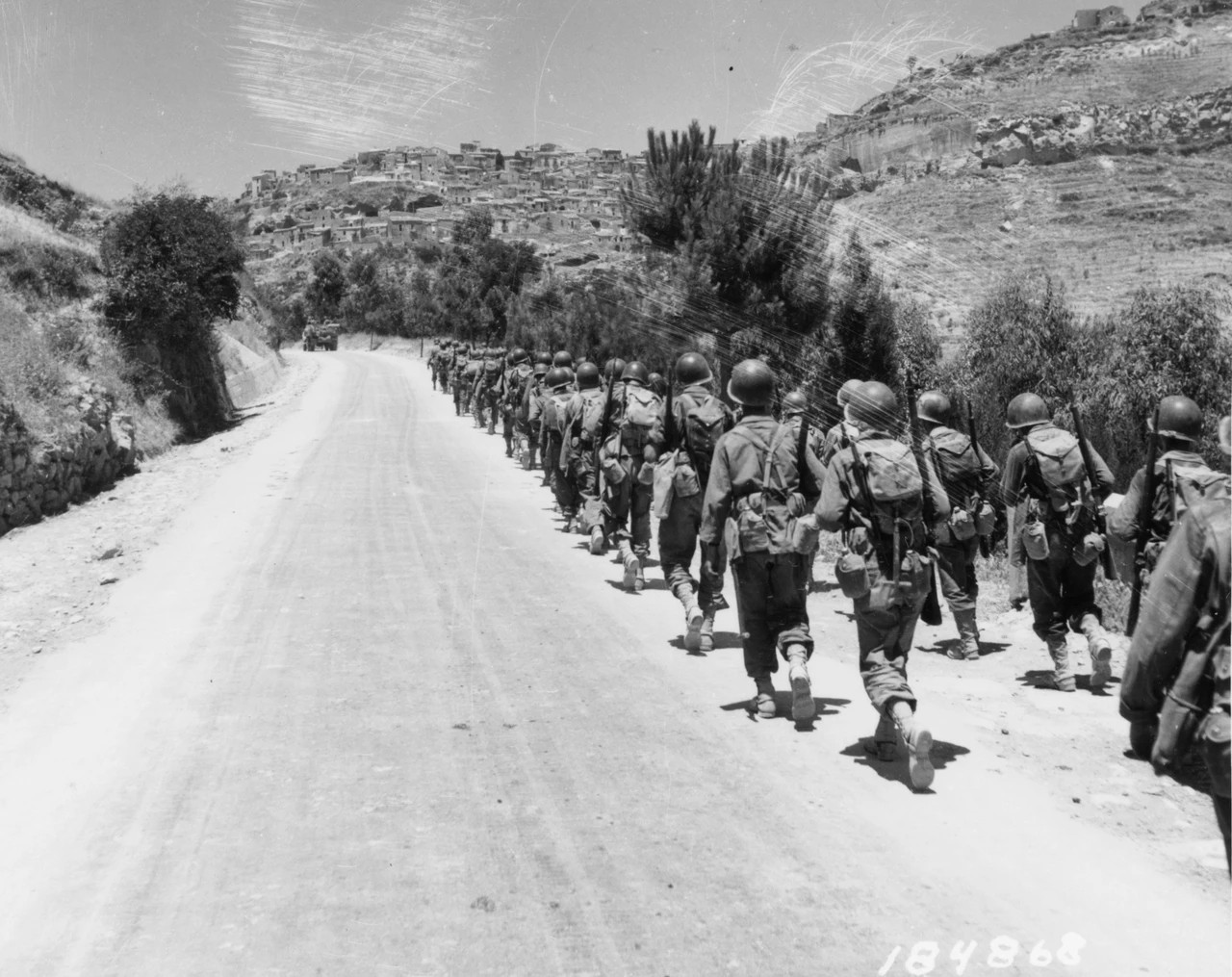Sicily was conquered in little more than a month, triggering the fall of the fascist regime in Italy (on 25 July the king replaced and arrested Mussolini). However, compared to Montgomery's plans there were many more casualties than expected, and German forces managed to evacuate most of their troops to the continent.
On the night of 9 to 10 July 1943, the Allies landed on the south-east coast of Sicily with over 160,000 men. The British (with Canadian support) moved up the east coast, quickly liberating Syracuse and Augusta then fighting on the Catania plain. The Americans moved north into the heart of the island, arriving at Agrigento on 16 July, Enna on the 20 July and Palermo on the 22 July. The hardest fighting took place in Gela and Troina.
German forces took over the defence of the island from the Italians, and thanks to the reinforcements they received they managed to establish a solid defensive line below Mount Etna. At the start of August, they decided to retreat and prepared an orderly evacuation plan completed by mid-August. On 17 August the Allies entered Messina.
The conquest of Sicily saw over 30,000 casualties and despite the Allied forces’ clear superiority they failed to eliminate the German occupation force. The role of the Italian-American soldiers was important in the conquest, while the direct involvement of the Mafia remains a myth without foundation.
The Sicilian population had to endure heavy bombardment, especially in Palermo, and there were civilians massacres by the retreating Germans, for example at Castiglione. However, war crimes were also committed by American troops, for example at Biscari. Ultimately however, the Allies were welcomed as liberators from war, Fascism and hunger.
After the liberation, the Allied military government managed the situation left behind and began reorganising. The separatist movement gained support but was contained, and post-war a system of regional autonomy was established.
The landing has been depicted in various artistic, literary and cinematic works, notably the famous photographs by Robert Capa. Several ruins of military defences remain in the area and monuments and plaques have since been unveiled to commemorate the main episodes of the landing and campaign. There are also important museums on the subject, among which the Landing Museum in Catania stands out.
